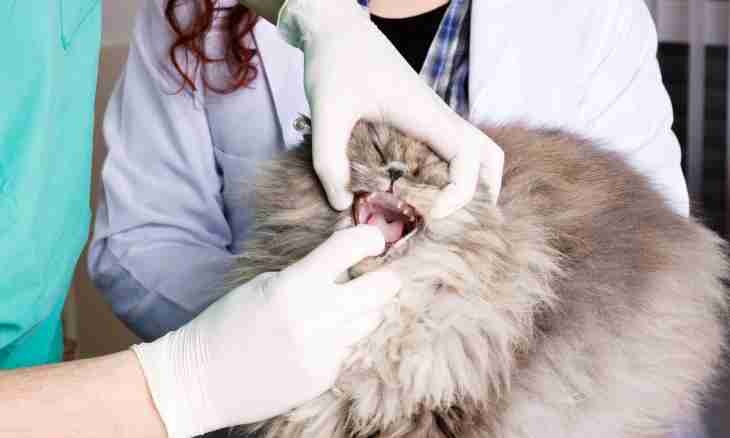The disease of a favourite cat causes many disorders and efforts it to the owner. It is possible to cope with small indispositions independently, and serious problems demand intervention of the expert. If to an animal treatment is appointed, observe all instructions of the expert, it guarantees fast recovery and lack of complications.
Instruction
1. You watch the state of health of a cat. Frequent vomiting, a diarrhea, long cough, inadequate behavior can become symptoms of a disease. Whenever possible carry an animal to the veterinarian. Consider that it is difficult to distinguish many diseases on initial symptoms. Analyses, X-ray or ultrasonic inspection can be necessary for specification of the diagnosis.
2. The trauma of an animal will become a reason for the address to the doctor also. Falling from height, a fight, poisoning or the swallowed foreign matter can be very dangerous. You should not self-medicate, the delay often leads to sad consequences.
3. In house conditions you will be able to cope with a lock, an allergy attack, cuts or splinters. Emergency aid requires a small first-aid kit which should be made in advance. Turn on in it a set of disposable syringes, bandage and cotton wool, hydrogen peroxide for a stop of bleedings, Q-tips, an adhesive plaster, tweezers, the thermometer and a mini-enema. Antihistaminic medicine and antiseptics is useful.
4. If the cat got sick, try to provide her rest. Arrange to an animal a convenient stove bench in a basket or a box. If often feels sick a cat or she suffers from incontinence, lay the disposable absorbing diaper and from time to time change it. Do not let a cat to a bed and chairs. The animal can soil furniture or fall and hurt.
5. Many diseases demand drug treatment. Solve whether you will give to a cat of a tablet or you will give preference to injections. At vomiting the intramuscular or hypodermic introduction of medicines is more convenient. You will be able independently to inject. Hypodermic injections are given in withers, having delayed a skin of an animal. It is more convenient to put intramuscular injections in a hip. It is important to record a cat that she did not escape and did not wound itself.
6. It is better to do intravenous injections in veterinary clinic or to invite the expert to the house. But if the course of droppers is prescribed the pet, you will be able quite to conduct it independently. The first procedure will be made in clinic, having established a catheter which needs to be changed in three days in a vein of an animal. In pharmacy you will be able to buy set for a dropper with physical solution into which by means of the syringe the registered antibiotics and vitamins are entered.
7. Provide healthy nutrition of the pet. During a disease at a cat the appetite spoils, she can refuse even favourite dishes. You feed her forcibly. In the small portions give to an animal paste for the recovering cats or meat baby food. If the cat refuses to pinch a forage, part paste with warm boiled water and its vypaivayta from the syringe without needle. In the same way give to an animal clear water. From dehydration also subcutaneous injections will help, but concerning their expediency it is better to consult to the veterinarian.
